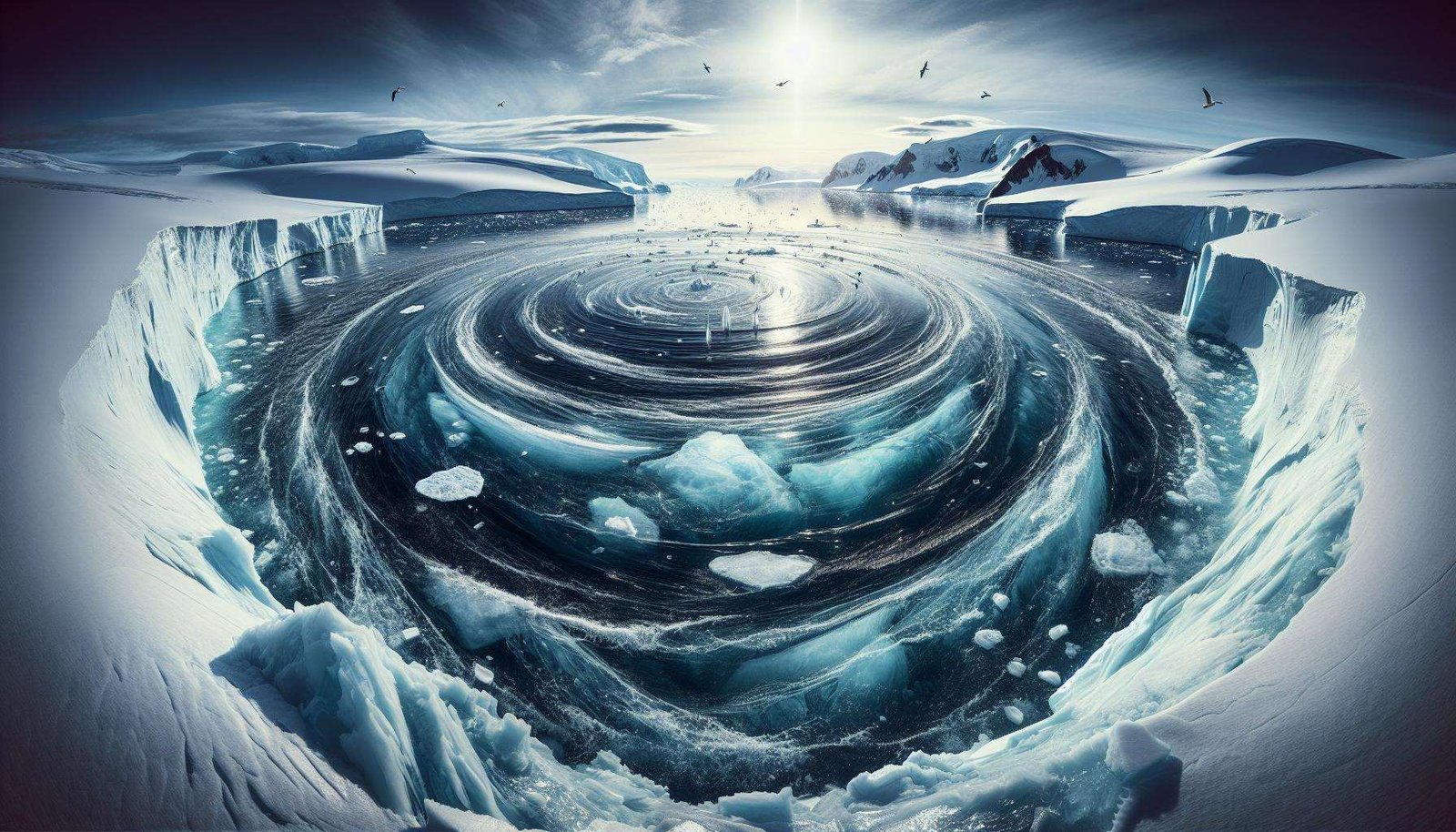
While you will have probably heard of climate change causing the potential collapse of the major current system, AMOC (Atlantic Meridional Overturning Circulation) the discussion of the currents in the Antarctic is less common but at least equally disturbing.
The potential collapse of the Antarctic Circumpolar Current (ACC) might sound like a complex scientific issue, but it’s an environmental phenomenon with global implications. To put it in perspective, imagine the planet’s oceans as a giant, interconnected conveyer belt powered by these currents such as the AMOC and the ACC. This current, unique to Antarctica, circulates cold water around the continent, affecting everything from global weather patterns to marine ecosystems. But recent scientific studies suggest that climate change is threatening this vital system—as a result, its stability and flow could falter. And that’s a problem. A big problem.
Understanding the Antarctic Circumpolar Current
The Antarctic Circumpolar Current is the only ocean current that circulates around the Earth without barriers from any landmass. It’s driven by powerful westerly winds and spans an impressive 12,000 miles in length. This vast current connects the Atlantic, Pacific, and Indian Oceans, playing a critical role in regulating Earth’s climate by redistributing heat and nutrients. You can think of it as a giant mixer, blending ocean waters and stabilizing temperatures globally. Notably, by bringing nutrient-rich deep waters to the surface, it supports diverse marine life and even influences phytoplankton growth, which is essential for carbon sequestration.
However, troubling changes are underway. Scientists warn that the ACC’s strength might diminish if global temperatures continue to rise. These shifts could upset marine ecosystems and affect weather patterns, having far-reaching impacts beyond the southern hemisphere.
Climate Change and Its Impact
So, what exactly is causing this potential collapse? In a word—climate change. The warming of ocean waters, largely due to increased greenhouse gas emissions, is altering the density and flow of the ACC. Warmer temperatures lead to the melting of ice sheets, contributing to rising sea levels and fresher surface waters, which in turn affects the current’s natural flow.
This issue is not isolated. A collapse of this current would contribute to greater climate extremes globally. For instance, more frequent and intense storms in some regions could occur, while others might experience unusual droughts. Furthermore, disruptions in the ACC might also impact the El Niño-Southern Oscillation, a key player in global climate variability.
Environmental and Societal Consequences
The environmental ramifications are significant. Changes in the ACC could affect the distribution and abundance of marine species, from tiny plankton to larger predators like seals and whales. As creatures move to maintain their preferred conditions, fishing industries—a cornerstone of many economies—might confront challenges in maintaining sustainable harvests as fish stocks waver.
On a societal level, the consequences of a shifting climate are profound. Agricultural patterns could be severely disrupted, leading to food security concerns as some regions become less hospitable for crops. Moreover, rising sea levels and intensified weather events present heightened risks for coastal communities worldwide.
Strategies for Mitigation and Adaptation
It’s not all doom and gloom. While the risks associated with the changes in the Antarctic Circumpolar Current are considerable, solutions and strategies to adapt and mitigate exist. Addressing the root causes of climate change—chiefly our reliance on fossil fuels—is crucial. Transitioning to renewable energy sources and adopting greener technologies can aid in reducing carbon emissions. According to recent data from Wikipedia, the adoption of renewable energy is growing rapidly, which is promising for global efforts to combat climate change.
Furthermore, supporting policies that protect and preserve ocean ecosystems will help bolster their resilience. Governments and organizations across the globe are working to establish marine protected areas and promote sustainable fishing practices. Such initiatives are designed to enhance biodiversity conservation, ensuring marine life thrives even as environmental conditions change.
The Role of Scientific Innovation
Innovation in climate science and technology is pivotal to tackling the challenges posed by the current’s collapse. Scientists are using advanced modeling and satellite data to monitor changes in the current and project future trends. These efforts are crucial for developing accurate forecasts that can inform policy decisions and public awareness.
Additionally, researchers continue to explore geoengineering solutions, like carbon capture and storage, to directly mitigate atmospheric CO2 levels. Though not without controversy, these technologies offer potential pathways to offset emissions if implemented responsibly and ethically.
Engaging the Public
Public engagement and education are keys to a broader societal response. When individuals understand the significance and potential impacts of changes to the ACC, they are more likely to support sustainable practices and policies. This empowerment starts with raising awareness through media, educational programs, and community initiatives.
Moreover, personal actions, such as reducing energy consumption, supporting sustainable seafood choices, and advocating for environmental policies, have a cumulative effect. Every effort counts in the global movement towards a sustainable future.
Conclusion: Navigating Uncertain Waters
The potential collapse of the Antarctic Circumpolar Current is a pressing issue with global stakes. While science alerts us to the potential dangers, it also offers pathways to resilience and adaptation. By comprehending the intricate relationships within our planet’s climate systems and acting decisively, we can safeguard our world for future generations. As we navigate these uncertain waters, collective action, bolstered by innovation and education, will guide us toward a sustainable tomorrow.
The post The Looming Threat: Collapse of the Antarctic Circumpolar Current and Its Global Implications appeared first on Green.org.














